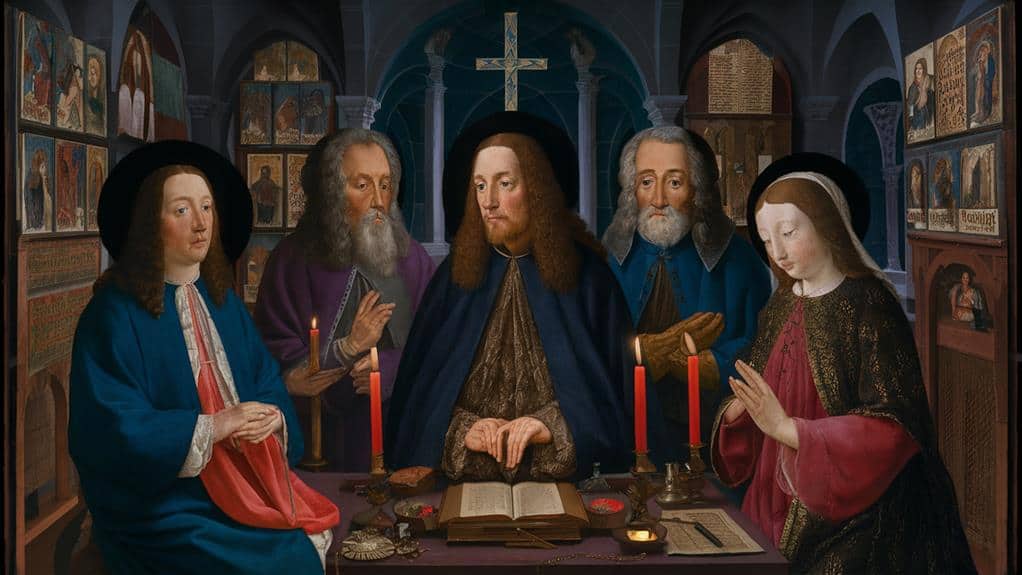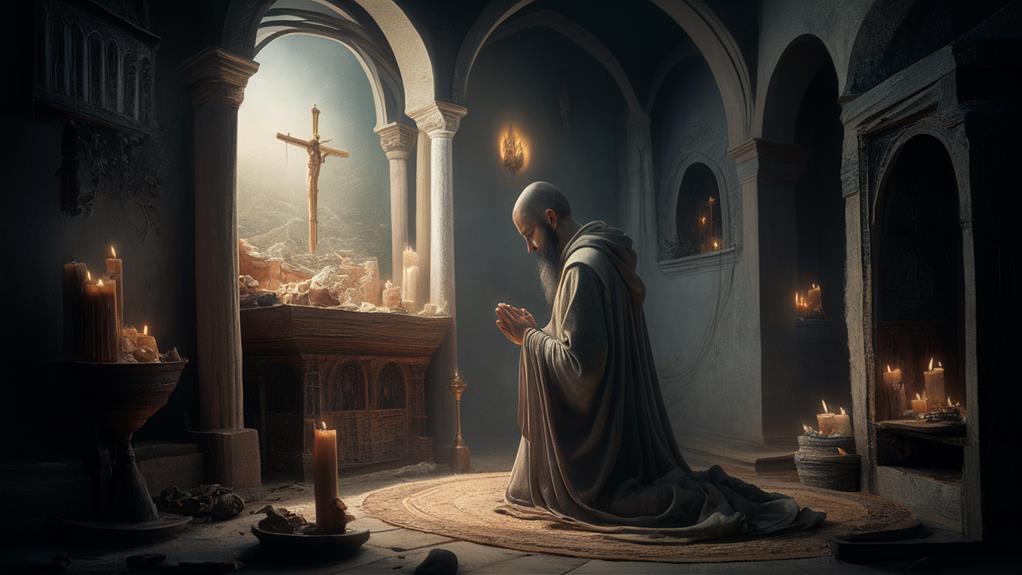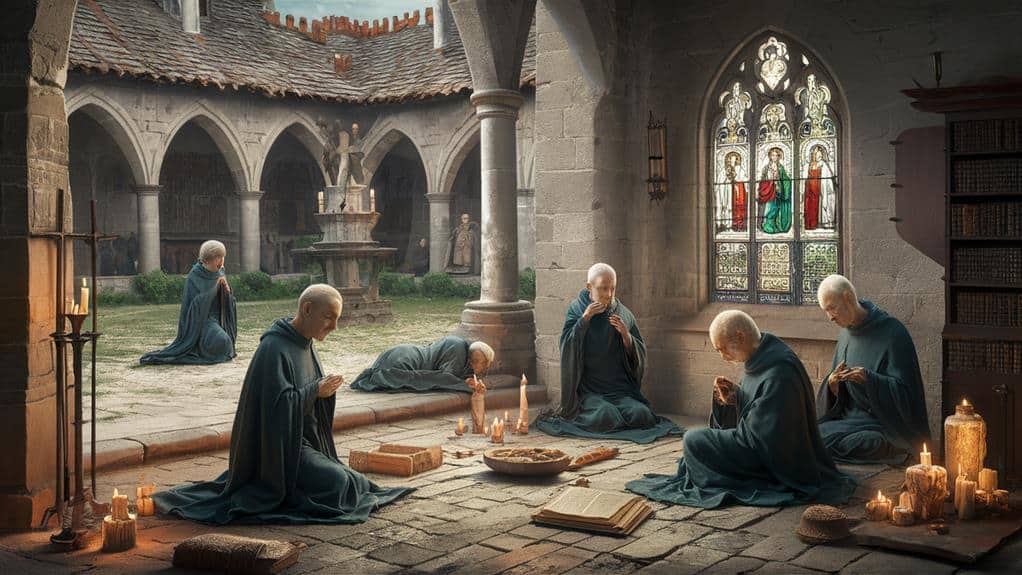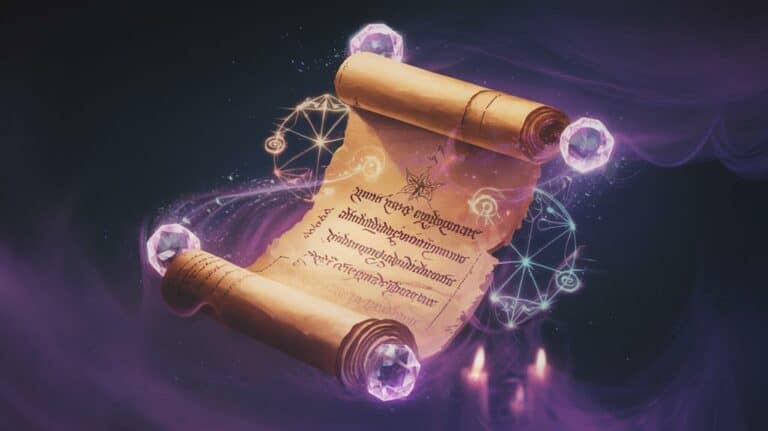Mysticism in the Fourteenth Century
As you explore the mysticism of the fourteenth century, you’ll encounter profound explorations of the inner spiritual journey. Figures like Meister Eckhart, Johann Tauler, and Heinrich Suso were pivotal in shaping this movement, which emphasized self-emptying and detachment to foster a deep connection with the divine. Their teachings promised a transformative experience of oneness with God, but this vision was not without controversy. It ultimately set the stage for the Reformation and left an indelible mark on Western spirituality. The question remains, how did these mystical teachings resonate with the broader Christian community?
Key Figures of the Movement

Frequently, discussions of mysticism in the fourteenth-century center on a handful of influential figures who played pivotal roles in shaping the spiritual landscape of the era.
As you explore this period, you’ll encounter the likes of Meister Eckhart, a Dominican friar renowned for his intellectual prowess and abstruse doctrines that resonated with both clergy and layfolk. His disciples, Johann Tauler and Heinrich Suso, further disseminated his teachings, fostering a broader group of German and Swiss mystics known as the Friends of God.
Jan Ruusbroec from the Netherlands and Catherine of Siena from Italy also emerged as key figures, each making distinctive contributions to the mystical landscape. Ruusbroec developed a Trinitarian mysticism that, despite some disagreements, drew notably from Eckhart’s work.
Meanwhile, Catherine of Siena, a Dominican nun, served as a spiritual guide, engaging an admiring circle of followers.
In England, figures like Julian of Norwich, an anchoress and author of *Revelations of Divine Love*, Walter Hilton, who penned *The Scale of Perfection*, and the anonymous author of *The Cloud of Unknowing* further enriched the mystical tapestry of the fourteenth century.
Their profound writings continue to inspire contemplation and introspection today.
The Rhineland Mystics’ Teachings
Within the heart of the Rhineland, the teachings of the mystics flourished, particularly through the influential work of Meister Eckhart and his disciples, Johann Tauler and Heinrich Suso. As you explore their teachings, you find yourself on a path of profound introspection.
The emphasis is on letting go, on emptying yourself of self and all things, to be reconstructed in the simple good that God is. This detachment doesn’t mean leaving humanity behind; rather, it makes you marvelously present to others in God.
You are invited to traverse the ground of the soul, filled with the alternating rhythm of death and becoming, with the painful experience of self-knowing and detaching. The Rhineland mystics speak of a light that’s in the soul, uncreated and uncreatable, which is roused into consciousness by their words.
They remind you that God loves you so deeply that He can’t wait for your soul to turn away and strip off all creatures. Your suffering for God, and God alone, doesn’t hurt you or bear you down, for God bears the burden.
This teaching beckons you to return to the transforming ground, to know yourself and your dignity in God.
Contemplation and Mystical Union

As you commence on the journey of contemplation and mystical union, the teachings of Meister Eckhart and his disciples guide you to inner silence and detachment. You learn to quiet the mind, letting go of distractions and worldly attachments to reach a state of profound stillness.
The Rhineland mystics emphasize the importance of this inner silence, where the soul can freely ascend to union with the divine. In this state, you transcend the boundaries of the self, becoming one with the infinite and the eternal.
The path to mystical union involves a deep introspection, where you confront your innermost self and let go of the ego‘s hold. You aren’t just a seeker of spiritual truth but a participant in the divine dance, where the boundaries between creator and creation blur.
As you explore deeper into contemplation, the distinctions between the self and the divine dissolve, and you experience a oneness that’s both liberating and transformative. This journey isn’t about escaping the world but about finding freedom within it, a freedom that’s rooted in the profound union with the divine.
Influence on the Reformation
The mystical movements of the fourteenth century, particularly those led by Meister Eckhart and his disciples, laid the groundwork for a deeper understanding of spiritual truth that would later influence the Reformation.
As you explore the history of these movements, you’ll discover how the intense, direct experiences of the divine Spirit that characterized Rhenish mysticism began to radiate beyond convent walls to the broader public. The teachings of Eckhart, Johann Tauler, and Heinrich Suso inspired not only members of the Dominican order but also laypeople who sought spiritual consolation and religious excitement.
In the wake of these mystical traditions, Martin Luther would later find himself influenced by the writings of Gerhard Groote and the anonymous *German Theology*, which emphasized the importance of moral action alongside spiritual communion.
Luther’s exposure to these mystical texts, combined with his own quests for spiritual truth, would shape his theological perspectives and the Reformation as a whole.
The legacy of fourteenth-century mysticism, therefore, underscores the profound impact of these spiritual explorations on the evolution of Christian thought and the quest for divine understanding.
This legacy invites you to explore the profound intersections between mysticism and the Reformation.
Legacy and Historical Impact**

You’re about to investigate the rich legacy and historical impact of fourteenth-century mysticism, which deeply influenced the Reformation and continues to resonate with spiritual explorers today.
This era’s mystical traditions not only shaped the theological landscape but also infused the very fabric of Western spirituality.
The writings of Meister Eckhart, Johann Tauler, and Heinrich Suso, among others, facilitated a direct and personal experience of the divine, which in turn inspired movements like the Friends of God and the Brethren of the Common Life.
The *devotio moderna*, a spirituality emphasizing moral action and inner devotion, further spread through the works of Gerhard Groote and Thomas à Kempis, influencing figures such as Erasmus and Luther.
The legacy of fourteenth-century mysticism extends beyond the Reformation, influencing subsequent spiritual movements in Europe, including the Society of Jesus founded by Ignatius of Loyola.
It also laid the groundwork for diverse Protestant traditions that valued mystical experiences, such as Pietism and Quakerism.
This rich heritage reminds you that the quest for spiritual depth and direct communion with the divine remains a powerful force in shaping human history.
Conclusion
As you reflect on the mystical landscape of the fourteenth century, you’re invited to immerse yourself in the profound teachings of Meister Eckhart, Johann Tauler, and Heinrich Suso. Their emphasis on self-emptying and detachment laid the groundwork for a transformative experience of unity with God, shaping Western spirituality and fueling the Reformation. This legacy continues to inspire, urging us to seek personal divine encounters and moral action within the Christian faith, fostering a deeper understanding of ourselves and our place in the universe.









